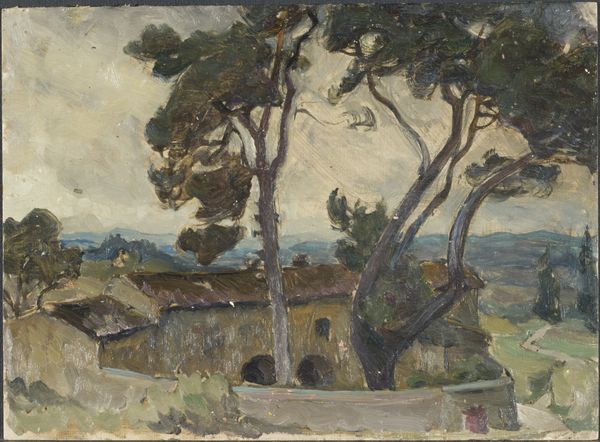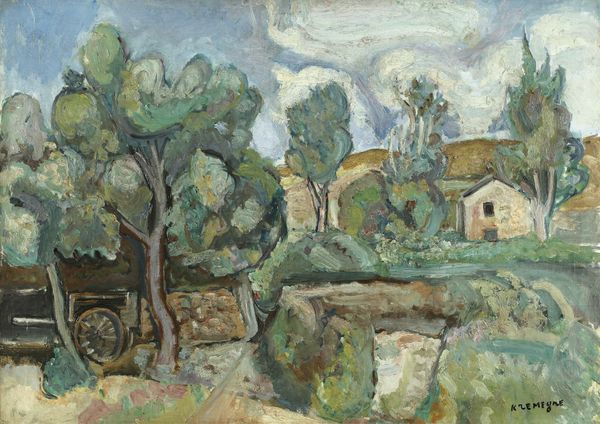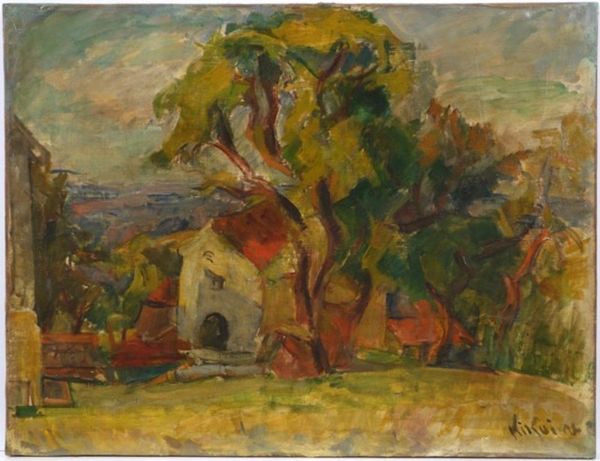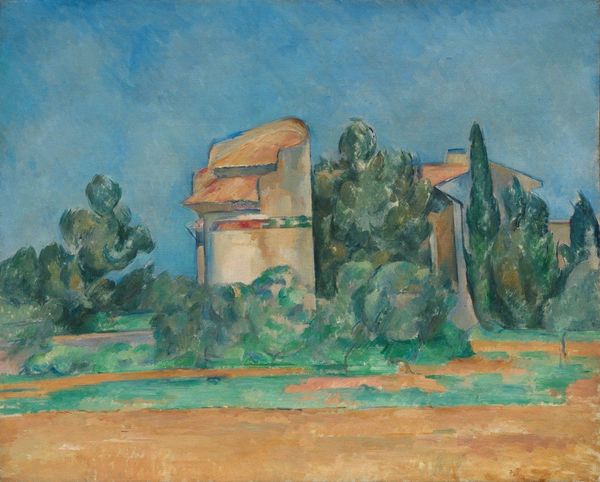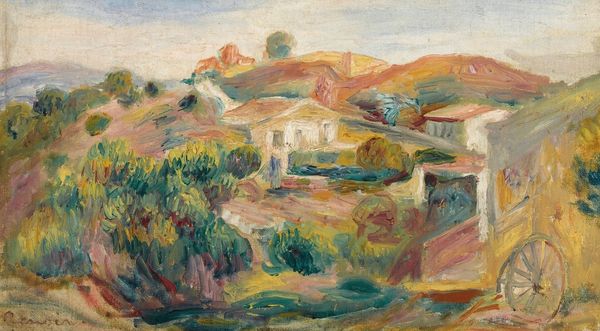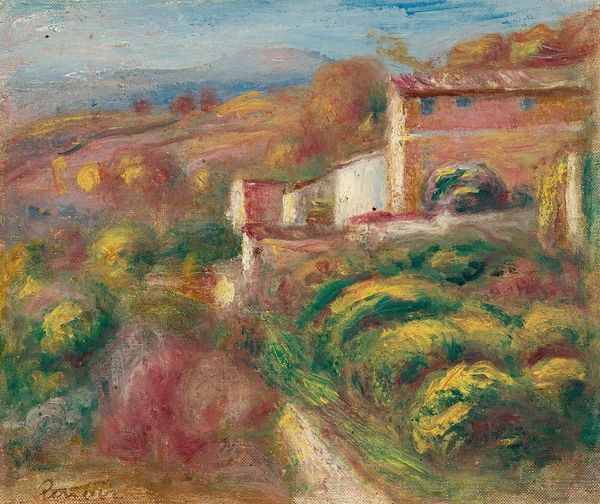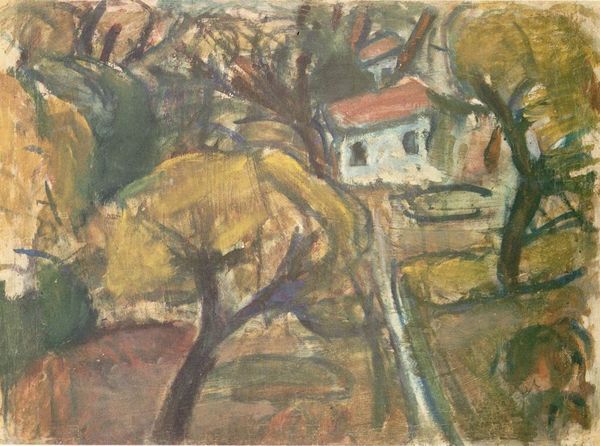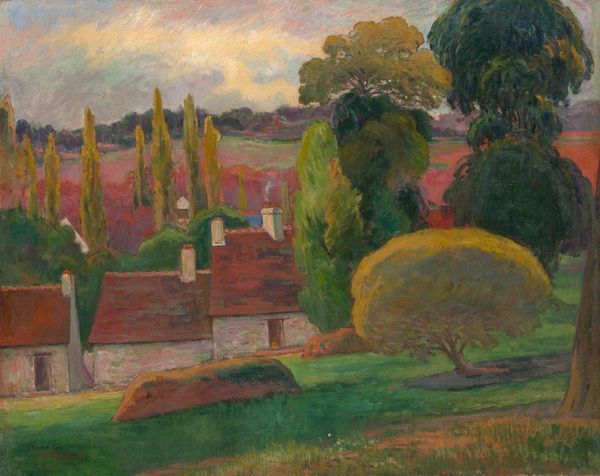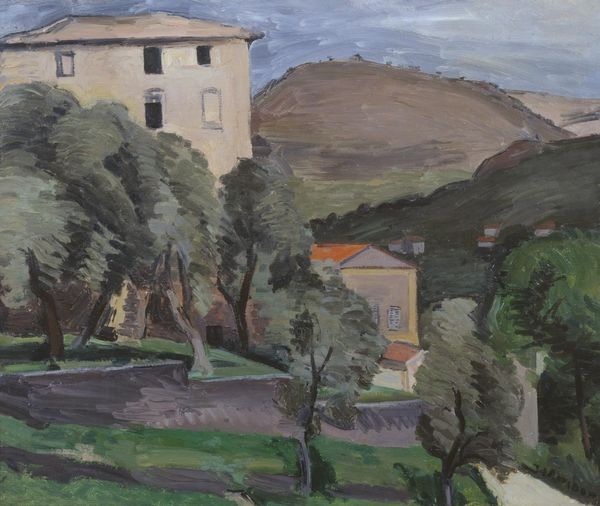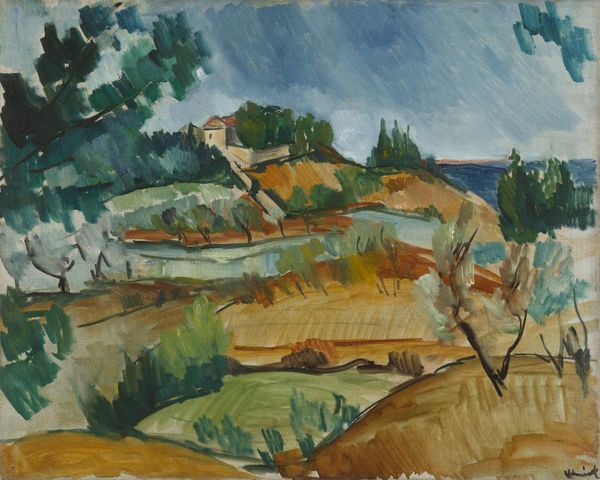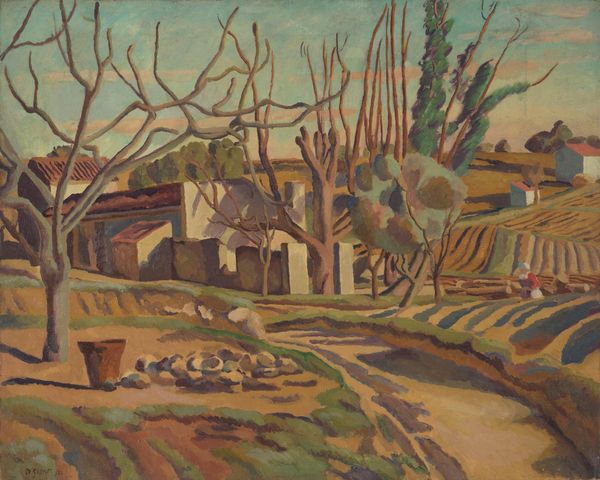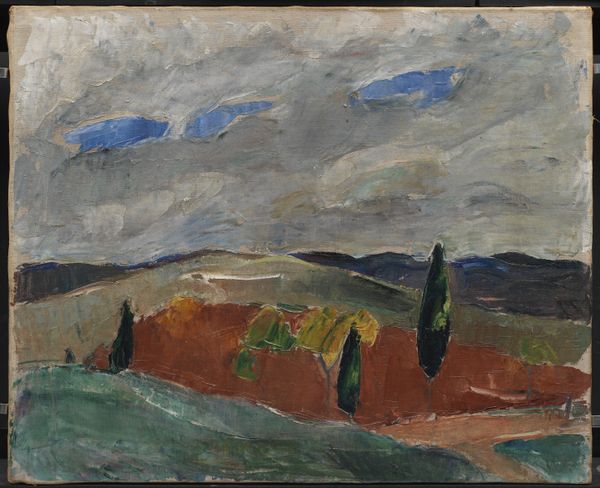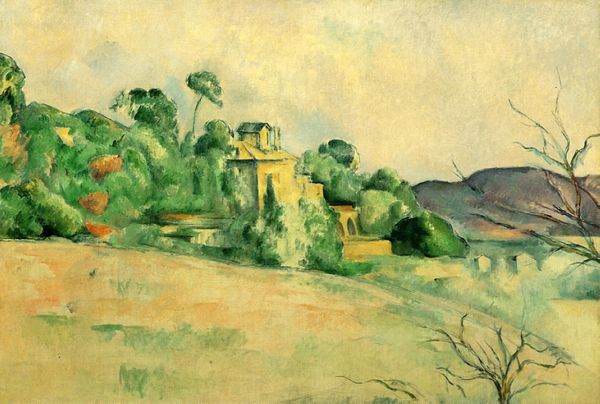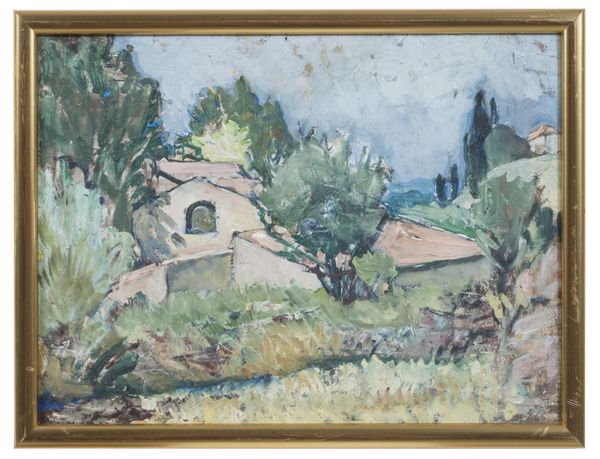
Copyright: Public Domain: Artvee
Curator: Welcome. We are standing before Tadeusz Makowski's, "Fragment of a house with two trees," completed in 1920. Editor: It strikes me as strangely desolate, despite its simple, almost childlike depiction of a landscape. The muted palette lends a melancholic air. Curator: Yes, note the impasto technique. The thickly applied oil paint builds texture, giving the impression of a lived-in, almost decaying, scene. Observe how the geometric forms suggest a building and foliage, rather than explicitly defining them. Editor: And considering Makowski's position as a Polish artist painting between world wars, the fragment becomes symbolic. Is he pointing towards the fracturing of community and the instability of the era? The Fauvist influence certainly adds emotional intensity to an otherwise mundane scene. Curator: Precisely. The composition divides roughly into horizontal bands: ground, buildings, and sky, each rendered in varying intensities. This segmentation contributes to its formal stability but does little to comfort the disquieting tonal quality. It's also interesting to observe his deviation from strict Fauvist practice, in that the artist limits the use of expressive color choices in favor of what may strike viewers as restrained or depressive tones. Editor: Perhaps that restraint is its strength. It’s not a straightforward celebration of color but a nuanced portrayal of place and, indirectly, of the individual's relationship to that space amid a landscape that carries the heavy weight of both war and progress. Did he make this fragment from observation, or from memory I wonder? Curator: An intriguing point! Memory adds another layer to our reading, implying that these forms are impressions and constructs rather than purely mimetic depictions. The simplification invites this. Editor: Ultimately, it leaves me with a sense of longing for an idyllic past tinged with a stark realization of impermanence. Curator: Indeed. Makowski achieves something powerful here by combining formal reduction with evocative coloring, a duality which makes his painting so thought-provoking.
Comments
No comments
Be the first to comment and join the conversation on the ultimate creative platform.
